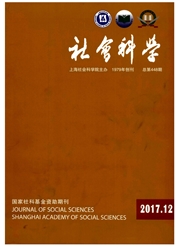

 中文摘要:
中文摘要:
产权管制理论范式把“产权管制一公共领域一租金耗散”和“信息约束一管制放松一经济增长”这两个定律作为内核,并以原因、过程和绩效三个假说作为保护带。该范式把经济体制转轨理解为一个产权管制不断放松的过程。在此基础上,可以进一步围绕交易费用的内生性、外生性和内外均等化三条逻辑构建产权管制的契约范式,从而相应得到“剩余权利全面管制的工资契约”、“剩余权利无管制的定租契约”和“剩余权利均衡管制的分成契约”三个命题,最终构成一个基于产权管制契约范式的国家理论。该理论强调不同的产权管制契约类型分别对应着不同的产权管制制度结构,从而形成不同的国家组织模式。
 英文摘要:
英文摘要:
The theoretic paradigm of regulation of property fights considers two theorems that refer to "regulation of property fights-public domain-rent dissipation" and "information constraint-deregulation- economic growth" as the internal core, and makes the performance hypothesis as its protective belt. Under this causation hypothesis, process hypothesis, and paradigm , economic transition is explained as a continuously process of deregulation of property fights. Based on it, we can revolve endogenous, exogenous, and internal-external equalization transaction cost logic to build the contractual paradigm of regulation of property fights. Eorrespondingly, the fixed wage contract proposition of overall regulation of residual fights, the fix rent contract proposition of unregulated residual rights and the share contract proposition of balanced residual fights form a theory of the State based on the contractual regulation of property fights. What's more, this theory emphasizes different contractual types of property fights correspond different institutional structures of regulation of property fights paradigm of of regulation , so different organization modes of the State are formed.
 同期刊论文项目
同期刊论文项目
 同项目期刊论文
同项目期刊论文
 期刊信息
期刊信息
